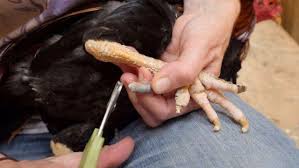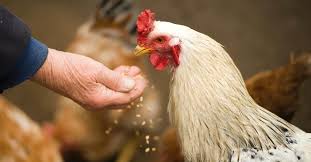De-beaking (also called beak trimming) is the act of cutting the lower and upper points of the beak. The trimmed upper beak is usually shorter than the lower beak. Debeaking birds helps prevent feed wastage, cannibalism, feather pecking, and egg eating.
Mortalities due to cannibalism can reach up to 15% in un-debeaked laying hens housed in aviaries, straw yards, and free-range systems. However, when they are kept in smaller groups in cages, cannibalism is reduced.
Birds that are normally debeaked are laying hens, turkeys, quail, and ducks. Broilers meant for meat are not debeaked because they reach slaughter weight before injurious pecking starts. However, broiler breeders are debeaked because they are kept for a long time.
Procedure for De-beaking
Cut the beaks of older birds separately, always cutting the upper beak first. The upper beak must be cut to two-thirds and the lower beak to one-third. Prevent stress as much as possible.
Read Also: How to Choose the Right Livestock for your Farm
Procedures for Removing Rooster Spurs and Claws

1. Filing: File down the tip of the spur with a Dremel or other grinding instrument. Since the spur continuously grows like the toenails, this procedure must be repeated as the spur tip grows out.
2. Electrocautery (Chick Stage): The spur can be removed when the rooster is still a chick. A veterinarian uses electrocautery to hinder the growing cells of the spur.
3. Plier Method: Instead of cutting, use pliers to twist the spur at its base, near the leg, and remove the outer sheath, leaving a smaller spur underneath. This method may cause minor bleeding. Applying water and household white sugar helps clean and clot the blood.
4. Wire Cutters: Wire cutters may be used by snipping off the tip of the spur. Be careful not to snip off too much as this can cause profuse bleeding. Cutting too deeply reaches the soft new spur underneath. After snipping, use a metal file to smooth the edges.
Permanent Spur Removal
This method is done when the cockerel is 10-16 weeks old, and the spur is 1/4 inch long. The spur is cut off close to the leg, and potassium hydroxide is applied to the wound to prevent bleeding and regrowth.
Another method involves using an electric calf dehorner to burn off the spur. Precision is needed to avoid over- or under-burning. It is said that this method doesn’t bother the rooster, and recovery happens in a few days.
A technique suggested in Stromberg’s Book of Poultry involves placing a hot baked potato on the spur for a few minutes, then twisting it off with no blood or mess.
A Dremel tool with a cut-off wheel attachment can also be used. One person holds the rooster’s leg, and the other cuts the spur off just before the quick, taking care to avoid cutting too close, which may cause profuse bleeding.
Read Also: Guide on How to Start a Food Forest
Alternative Measures to De-beaking in Countries Where it is Banned

In some countries, beak trimming is banned, and producers must adopt alternative methods to prevent cannibalism and other aggressive behaviors. These alternatives include:
1. Reducing Light Intensity: Reducing light intensity so that birds can barely see each other. This method works only in environments where light can be easily controlled.
2. Enrichment Devices: Birds are introduced to enrichment devices at an early age. These include grasses, branches, and other objects that birds can play with, which can be suspended from the ceiling. Perches can also be used.
3. Dividing Large Groups: Splitting large numbers of birds into smaller groups can reduce aggressive behaviors.
These alternative measures, along with good management practices, can effectively reduce harmful behaviors in poultry without the need for physical modifications like de-beaking.
Do you have any questions, suggestions, or contributions? If so, please feel free to use the comment box below to share your thoughts. We also encourage you to kindly share this information with others who might benefit from it. Since we can’t reach everyone at once, we truly appreciate your help in spreading the word. Thank you so much for your support and for sharing!
Read Also: Boilers and Boiler Water Treatment in Industrial Waste and Water Treatment

